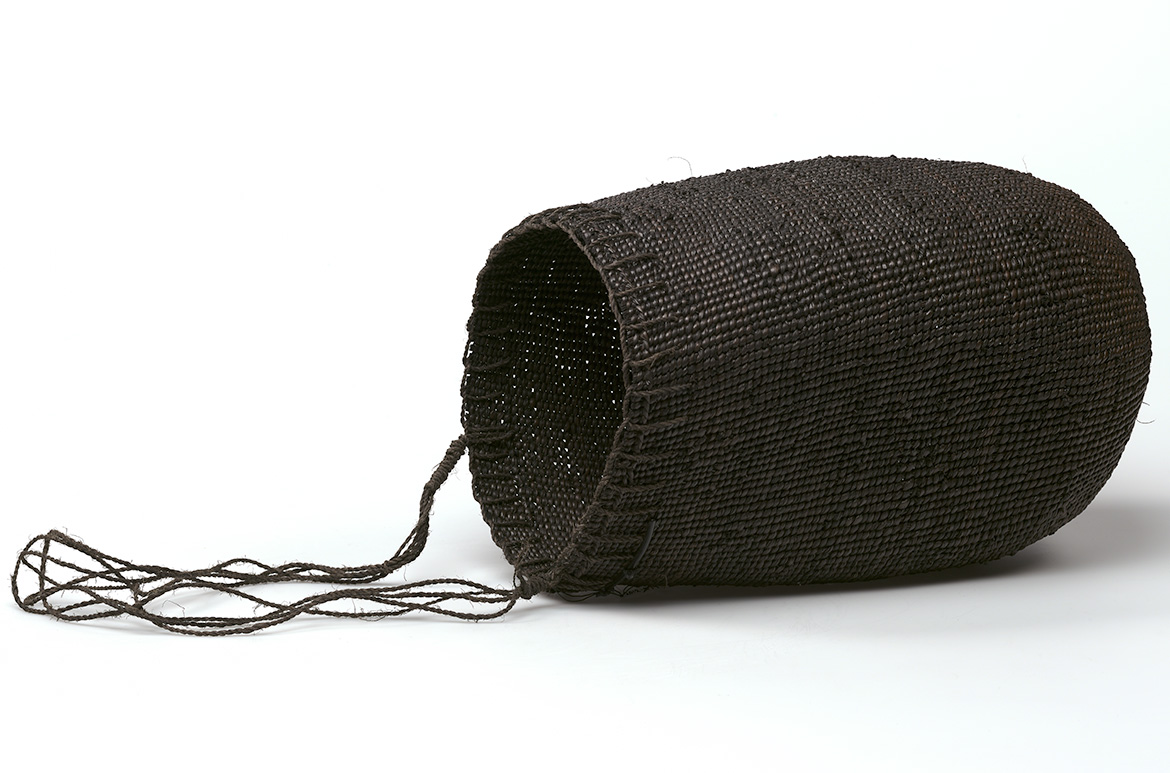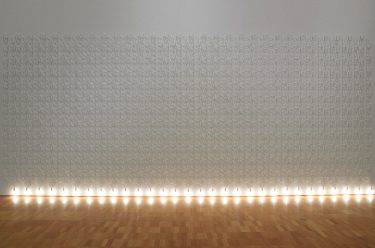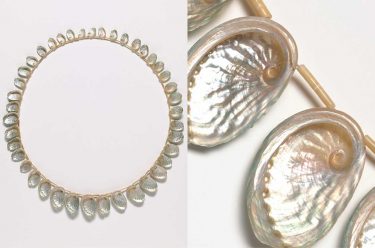Arnhem Land artist Margaret Rarru Garrawurra has won the prestigious National Aboriginal and Torres Strait Islander Art Award for 2022 with a work featuring her signature rich black-dyed pandanus which she is renowned for. A closely-guarded process she discovered through rigorous experimentation, the dense charcoal coloration emphases the hand-weaving process. You can view works by Margaret Rarru in the exhibition ‘Transitions Now: Contemporary Aboriginal Forms and Images’ currently at the Gallery of Modern Art.
Born in farthest northern Arnhem Land (Northern Territory), Rarru was taught important Liyagawumirr clan designs by her father, and to understand the deep, poetic meanings of ancient creation narratives. When yothu (young), she was also instructed in the cultural meanings of woven fibre objects and a range of weaving techniques.
Margaret Rarru

Following the 2006 death of her brother Mickey Durrng, Margaret inherited with her sister, Helen Ganalmirriwuy Garrawurra, the right to paint Liyagawumirr sacred geometry. As Durrng once stated, ‘These designs are the power of the land. The sun, the water, creation, for everything’.1 The women of his family understood the importance of their role, and Ruth Nalmakarra (their father’s sister) led their introduction to the revival and reinterpretation of their cultural heritage, which they approached with great creativity.
Now, Rarru paints poles and barks in distinctive red (miku), white (watharr) and yellow (buthjalak) pigments, in variations of Liyagawumirr designs. Stripes reference body painting for ngarra, which is both a funeral ceremony and a celebration of regeneration and renewal. Other designs trace the tracks of buwata (bush turkey), or map, using circles and lines, freshwater springs made by the ancestral Djan’kawu sisters with their digging sticks on their creation journey across Arnhem Land.
Garrawurra women are central to ceremonial songs and dances that retell the Djan’kawu sisters’ story of when they wore beautiful and deeply significant objects, and spilled the Dhuwa moiety clans, languages, names and ceremonies from their woven baskets and mats throughout the land. The Garrawurra women honour this heritage in their art through replicating the Djan’kawu regalia, and imbue their work, both sacred and secular, with spirit and intensity.
Margaret Rarru ‘Mindirr’

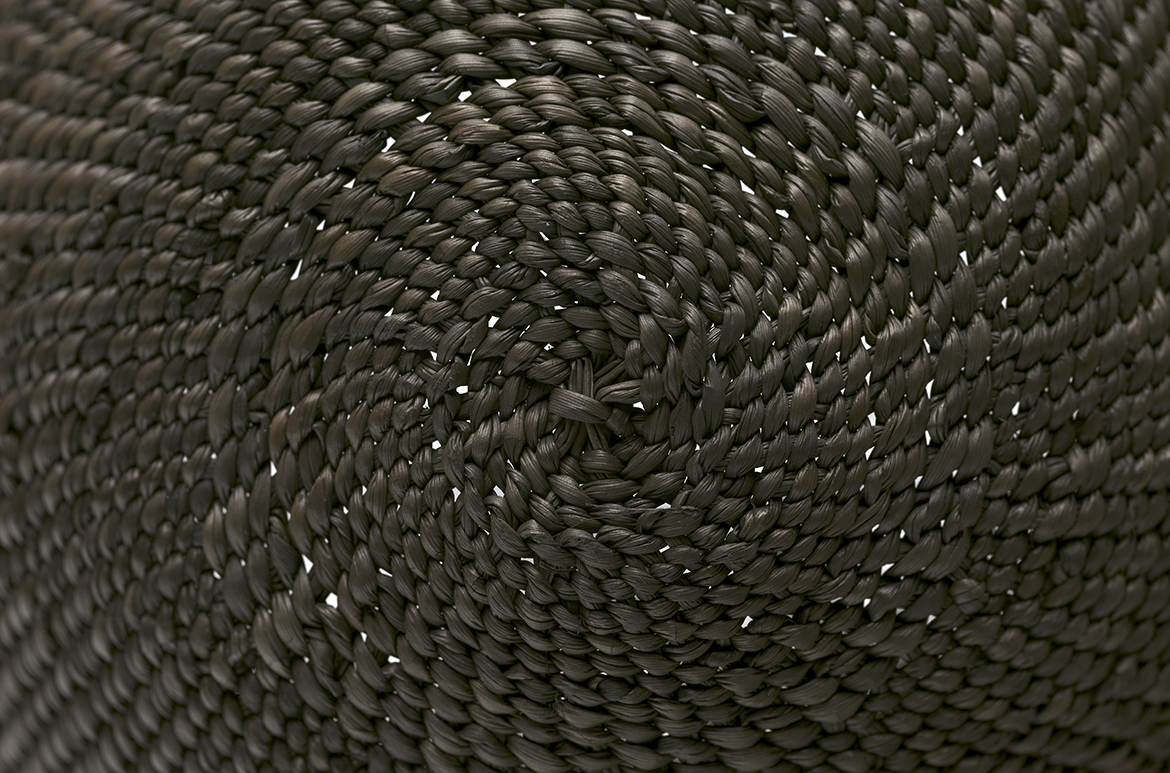
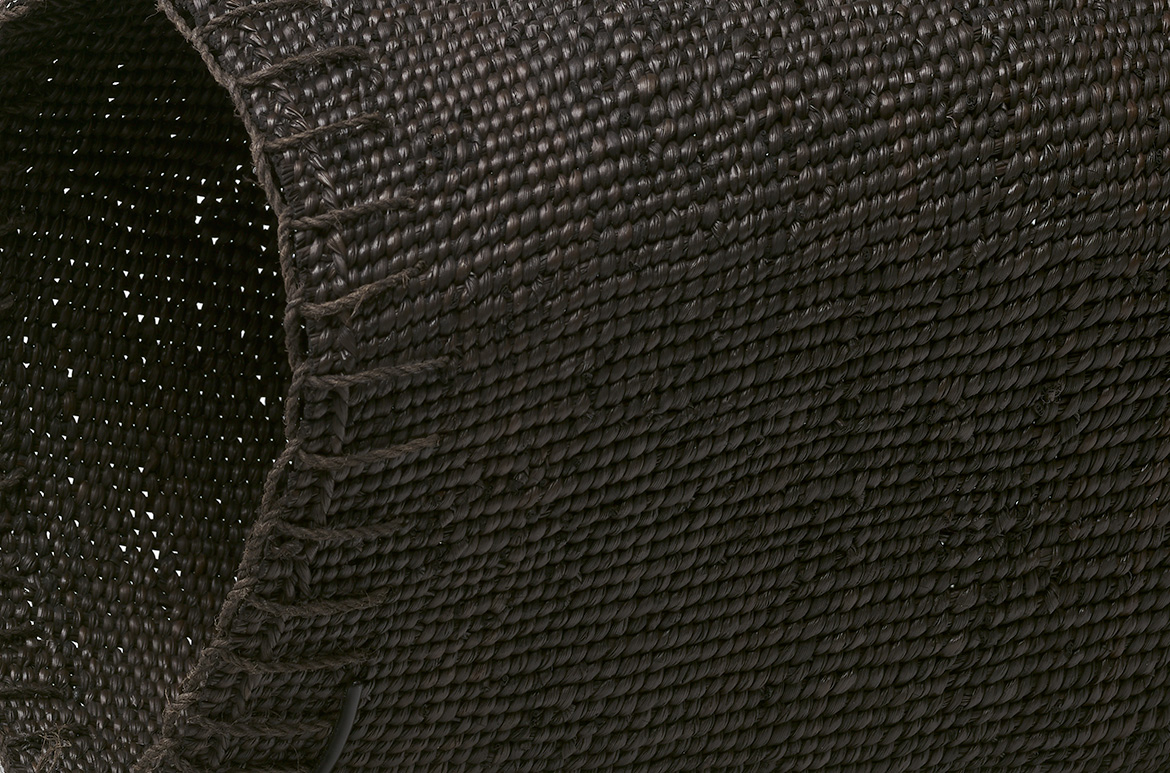
Mindirr (baskets)
The contemporary aesthetic of Rarru’s painted images resonate with her basketry, for which she continually invents new forms and techniques beyond the traditional. The introduction of the coil-weaving stitch, in particular, has extended her range into larger, more solid forms and, with the discovery of a rare black dye (achieved in a secret process), she has developed a unique bathi mul (black baskets). Pandanus leaf strands, saturated with rich colour, are tightly woven into metallic-looking surfaces, where fields of subtly graded shades of black reveal a gleam of charcoal. In contrast, the twined strands in conical mindirr create a matt, textured surface, highlighted with slight irregularities due to changes in the spacing and tension of the weave.
Raw materials, which themselves have cultural meanings, are harvested locally on Yurrwi (Milingimbi), the surrounding islands and the nearby mainland. Rarru travels to favourite bush or saltwater sites in the appropriate season, casting her experienced eye over leaves, roots, grasses, bark and hollowed out trees, and gather what she needs. A truck- or boatload is processed while fresh — pandanus and bark fibres are prepared for weaving and dyeing, wooden surfaces trimmed and smoothed, and rock pigments laboriously ground and crushed for paint.
Living remotely in her Arnhem Land island home, Margaret Rarru works tirelessly and professionally at her practice, and has established a reputation as one of the finest and most innovative textile artists in Australia.
Diane Moon is Curator, Indigenous Fibre Art, QAGOMA
Endnote
1 Mickey Durrng, quoted in Brenda Westley and Steve Westley, ‘Mickey Durrng: Artist of East Arnhem Land’, Aboriginal Art Online,<https://web.archive.org/web/20170221074637/aboriginalartonline.com/resources/articles2.php>, viewed May 2018.
Edited extract from ‘Margaret Rarru and Helen Ganalmirriwuy’ by Diane Moon in The 9th Asia Pacific Triennial of Contemporary Art, QAGOMA, 2018
Aerial view of Milingimbi
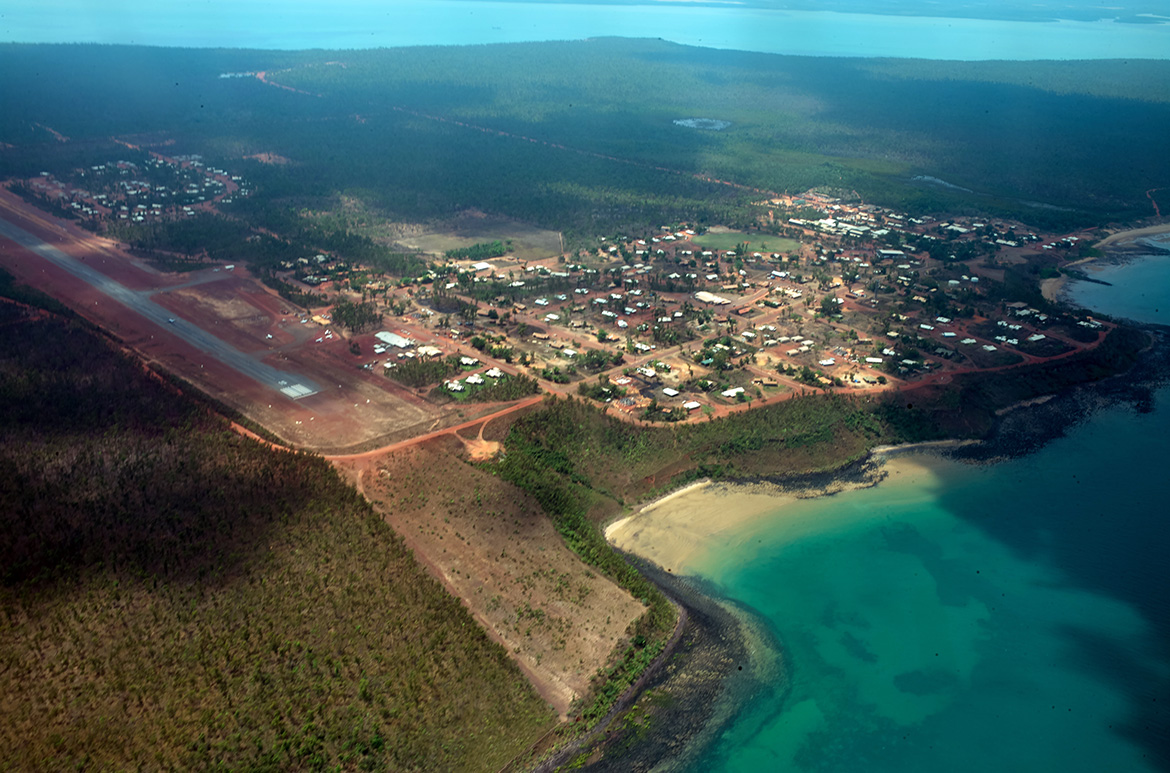
Transitions
‘Transitions Now: Contemporary Aboriginal Forms and Images’ (6 August 2022 – 18 June 2023) and ‘Transitions: Historic and Contemporary Barks 1948–2021’ (20 August 2022 – 10 April 2023) are dovetailing chapters of an exhibition that offers a unique experience of innovative contemporary Aboriginal art alongside eight decades of Australian Aboriginal bark painting.
Acknowledgment of Country
The Queensland Art Gallery | Gallery of Modern Art acknowledges the Traditional Owners of the land on which the Gallery stands in Brisbane. We pay respect to Aboriginal and Torres Strait Islander Elders past and present and, in the spirit of reconciliation, acknowledge the immense creative contribution First Australians make to the art and culture of this country.
It is customary in many Indigenous communities not to mention the name or reproduce photographs of the deceased. All such mentions and photographs are with permission, however, care and discretion should be exercised.
Reconciliation Action Plan
QAGOMA has launched its inaugural Reconciliation Action Plan (RAP) to guide its contributions to reconciliation. View the 2022–24 RAP.
Featured image: Margaret Rarru Mindirr 2012
#QAGOMA
